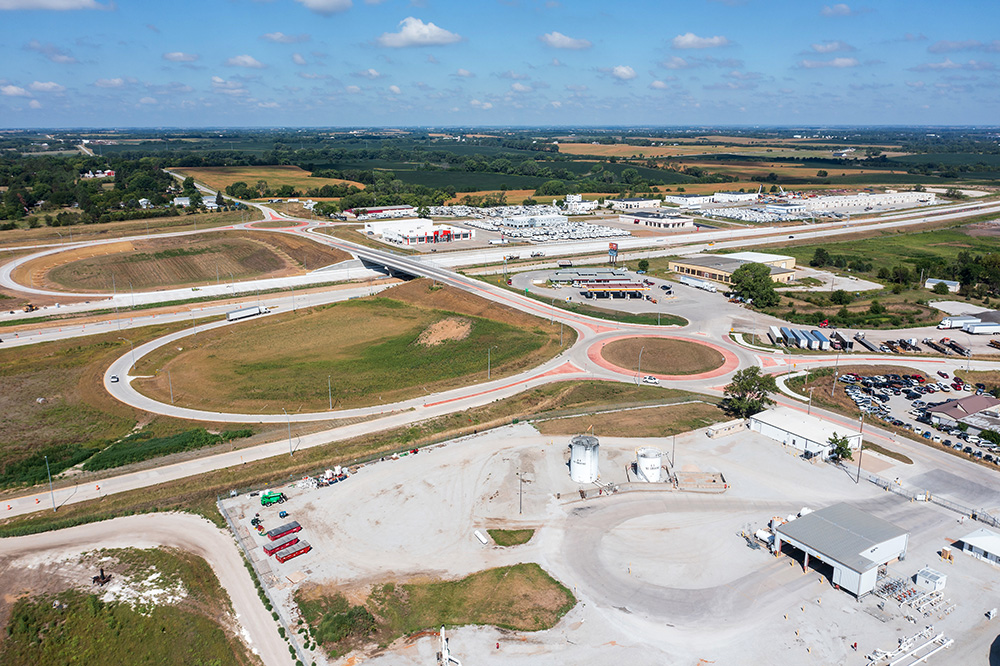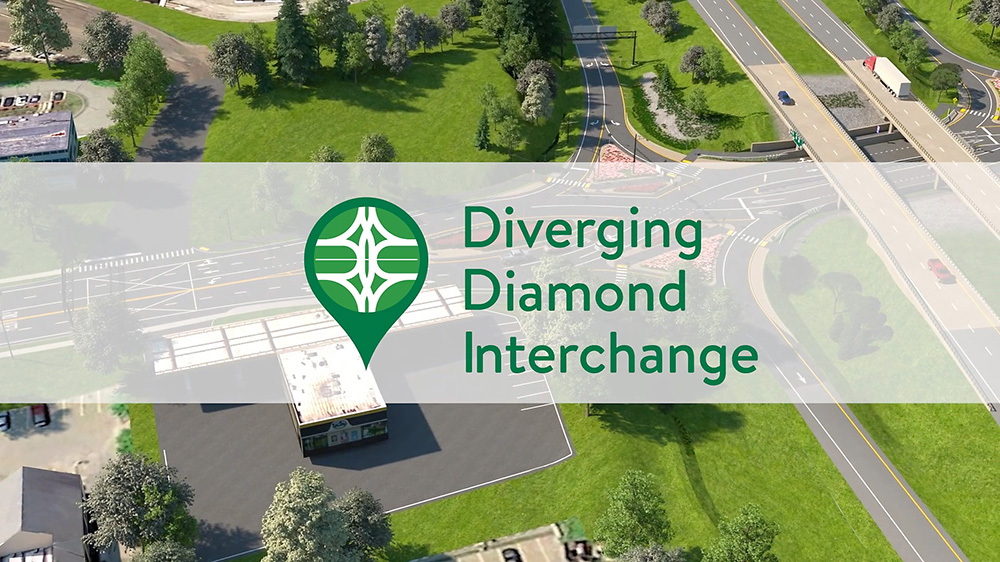
States Innovate!
Nebraska Accelerates Beltway Project with Value Capture
The Nebraska Department of Transportation (NDOT) used an innovative financing approach to complete its Lincoln South Beltway project in half the time it would have taken using traditional pay-as-you-go financing. For this design-bid-build-finance project, the State developed a value capture funding mechanism known as a deferred-payment contract. The contract accelerated construction by allowing the beltway to be built in 3 years and paid for over an 8-year timeframe. According to an NDOT news release, the project is the largest and one of the most complex NDOT has undertaken. Construction of the 11-mile, four-lane beltway includes five interchanges, 21 bridges, and 11 roundabouts.

Nebraska used an innovative financing approach for its Lincoln South Beltway project.
Credit: Nebraska Department of TransportationPennsylvania Podcasts Highlight Innovation Success
As part of a series of podcasts celebrating the 10th anniversary of its State Transportation Innovation Council (STIC), the Pennsylvania Department of Transportation (PennDOT) spotlighted successful deployments of several Every Day Counts innovations, including high-friction surface treatments. Their October podcast described a stretch of road that went from having 21 wet road crashes in one direction between 1997 and 2005 to zero crashes between 2007 and 2015 with the addition of HFST. PennDOT has also applied HFST to intersections and reported seeing benefits there as well. Another episode on geosynthetic reinforced soil–integrated bridge systems (GRS-IBS) described how this accelerated bridge construction method spread throughout the State. In 2018, FHWA STIC Incentive Program funding was used to update the specifications for GRS-IBS bridges. According to a PennDOT news article, each of its districts now has at least one GRS-IBS bridge and the agency is looking at future uses for overpasses and to help deal with increased flooding impacts on bridges.
South Carolina Shares Asphalt Overlay Solutions
Open-graded friction course (OGFC), a thin asphalt overlay, is gaining popularity as transportation agencies find ways to improve its durability and maintenance while still achieving safety benefits. The South Carolina Department of Transportation (SCDOT) has used OGFC for years to help reduce hydroplaning on high-volume routes. When SCDOT realized it was getting about half the life expectancy out of its OGFC projects, the agency worked with Clemson University to identify ways to improve OGFC design, performance, construction, and maintenance. The research led to SCDOT adding fines to its OGFC mixture, using a 265-degree warm mix OGFC, and ensuring that compaction is completed in less than 15 minutes to prevent excessive cooling. Read more in the Every Day Counts Targeted Overlay Pavement Solutions (TOPS) January e-bulletin and listen to a December 2022 TOPS webinar for lessons learned on OGFC from South Carolina and other States.
Colorado Earns Accolades for Concrete Overlay
The Colorado Department of Transportation (CDOT) has used concrete overlays to rehabilitate asphalt and concrete roadways for over 20 years. Concrete overlays are used on interstates and rural areas, such as State Highway 13 (SH13) in northwest Colorado. On SH13, a 6-inch concrete overlay covering 6 miles provides a long-term solution to a distressed asphalt roadway. CDOT let this project with alternates to identify the most cost-effective approach, and a 6-inch concrete overlay provided the lowest bid received. The contractor for the project also reused the asphalt millings to establish a stable paving base on the shoulder, provide a weather-resistant surface, increase smoothness, and improve overall quality. The SH13 concrete overlay project received the Colorado/Wyoming Chapter of the American Concrete Pavement Association (ACPA) Award for Excellence in Concrete Pavement Overlays, the American Concrete Institute State Award for Excellence in Concrete Pavement Overlays, and the ACPA National Gold Award for Excellence.

Vermont created a video for the public describing how both motorized and non-motorized traffic will flow through the State’s first diverging diamond interchange.
Credit: Vermont Agency of TransportationDiverging Diamond Interchanges Underway in Vermont and Washington
As part of a project to enhance mobility and safety, the Vermont Agency of Transportation (VTrans) is reconfiguring a traditional interchange into the State’s first diverging diamond interchange (DDI). The agency’s Exit 16 DDI Project is designed to address congestion and a lack of accommodations for non-motorized travel on U.S. Highway 2/7 near Interstate 89 in Colchester. A DDI improves safety by eliminating left turns across oncoming traffic. For pedestrians, a DDI’s walkways are located either through the median or along the sides of the crossroad, while bicycle lanes are placed in the customary location to the right of traffic. VTrans created a video for the public describing how both motorized and non-motorized traffic will flow through the DDI, as well as how it moves vehicles through an interchange more efficiently. According to the video, 46 States now have DDIs in use or in planning and crash reductions of up to 60 percent are being reported.
The Washington State DOT recently broke ground on what will be the agency’s second DDI. At one of the busiest interchanges in the State, the new DDI is the centerpiece of the Interstate 90/State Route 18 Interchange Improvements and Widening project, which is planned to keep traffic flowing and improve safety, as well as to remove old culverts and fish barriers to improve stream access for salmon and other native fish and wildlife.
Notice: The U.S. Government does not endorse products or manufacturers. Trademarks or manufacturers’ names appear in this article only because they are considered essential to the objective of the document.
Recommended Citation: U.S. Department of Transportation, Federal Highway Administration - Washington, DC (2023) Innovator Newsletter, March/April 2023, Volume 16 (95). https://doi.org/10.21949/1521904
- Cover
- States Use Data to Drive Road Safety Improvements
- U.S. DOT Leadership in Innovation: The Digital Revolution in Project Development and Delivery
- The Fight to Reduce Rural Roadway Departures: FoRRRwD’s Legacy
- Building Relationships that Advance Innovation
- States Innovate
- Learn About EDC-7 Innovations
- About Innovator



